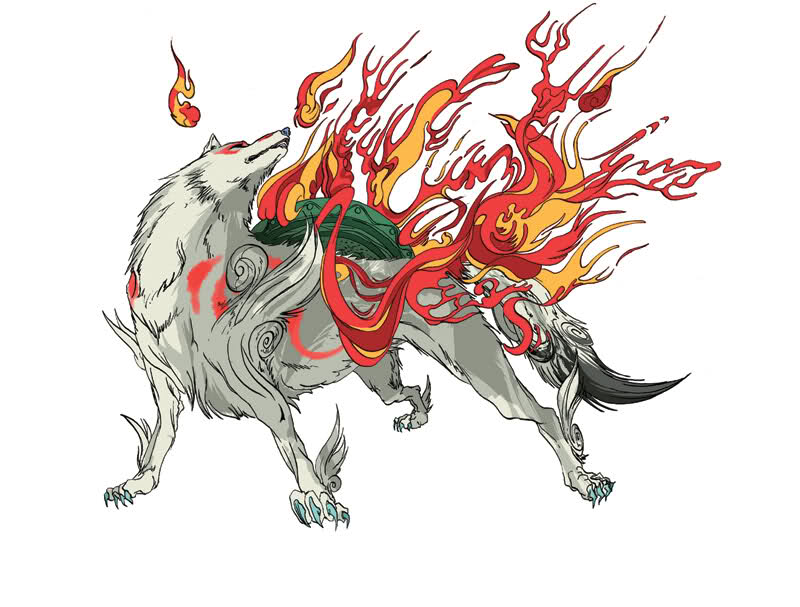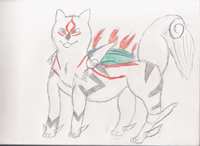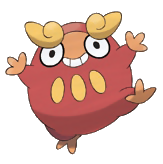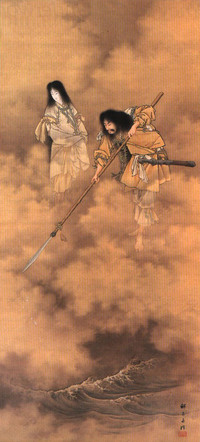Part 2: Mythology Dissection 1

Amaterasu and the Shinto Religion
Alright folks, big infodump today! So, strap yourselves in, grab a snack and let's get started.
 Today’s topic:
Today’s topic:Amaterasu Okami (our hero, of course)

Amaterasu Omikami is the Shinto goddess of the sun, and one of the principle deities of the Shinto religion. It is from her that Japanese emperors claim descent. So, she’s pretty important! In fact, she is the ruler of the gods' Higher Celestial Plain. She even has her own cult following: the Cult of the Sun.
Amaterasu was born from the left eye of the creator god Izanagi as he purified himself in a river. Her name means “the great august kami who shines in the heaven.” Note: in the game, her name is shortened to Okami, which means 'wolf,' but due to the way it’s written in kanji, it can also mean ‘great god.’ Furthermore, the same characters can be used to write her full name. That’s why she’s a wolf in this game. The more you know! NB: I know jack all about Japanese. This information was blatantly stolen from Wikipedia.
But hey, it wouldn't be mythology without a myth, right? Let's hear a myth about Amaterasu!
The Missing Sun
Long ago, Amaterasu had a bit of a falling out with her brother, Susanoo (the god of storms). This dispute culminated in Susanoo throwing a skinned pony (an animal sacred to Amaterasu) into his sister's weaving hall. Even worse, the pony landed on one of her attendants, killing her. Saddened and angered, Amaterasu fled to a secluded cave, and refused to come out. Of course, since Amaterasu was the sun goddess, when she went into hiding, all the world was plunged into everlasting darkness.
All the gods and goddesses gathered by Amaterasu's cave, trying to coax her out, but she ignored them. Finally, in order to lure her out, they hung a bronze mirror on a tree branch facing the cave, and began to dance and play music. The sounds of merriment made Amaterasu curious, and she peeked out of her cave. As she looked out, the first rays of the dawn shown again, and lit up the mirror, dazzling Amaterasu with the beauty of her own reflection. Taking advantage of this, the other gods pulled Amaterasu from the cave, and she joined in the merrymaking. Thus, was light returned to the world.
Of course, Amaterasu is also a Brush God in her own right, so here’s her write-up:

Amaterasu- the dog.
Dog traits: Honest, intelligent, straightforward, loyal, just and fair, attractive, amicable, unpretentious, sociable, open-minded, idealistic, moralistic, practical, affectionate, sensitive, easy going. Can be cynical, lazy, cold, judgmental, pessimistic, worrier, stubborn, quarrelsome.
In eleventh place came the dog. He was quite a fast runner and a good swimmer. He surely would have finished earlier, but being a playful creature, he just couldn’t resist swimming around in the river for awhile. Although, when the Jade Emperor asked about it, the dog explained that he had needed a bath after the long race.
 Arcanineratsu
ArcanineratsuAbout Shinto
Right, so I keep bandying around this Shinto stuff. You might be wondering, “What the hell is Shinto?!”
Wonder no longer! I’ll tell you. Shinto is the traditional state religion of Japan (though no longer official). It means “way of the gods.” It boasts over 119 million followers, most of whom also practice Buddhism (especially Buddhist ancestor worship). Shinto is pretty much inseparable from Japanese culture. Name any Japanese cultural icon, and odds are good it’s associated with Shinto.
Examples:


A Daruma, a Shinto good luck charm, and Darumaka, a Pokemon based on the former.

Sumo wrestling involves many Shinto-inspired rituals.
The deities of Shinto are known as the Kami- as in Okami, which means “spiritual essence,” though it's commonly translated as “god” or “spirit.” The Kami aren’t just gods, though, they’re the spiritual energies that pervade all things. You may recall Issun mentioned that “The gods now dwell within objects all around us.” He was referring to the Kami. In fact, anyone can be a Kami! When people are born in Japan, their names are registered to the local Shinto shrine (regardless of whether or not they actually practice Shinto). Upon death, people’s names are added to a different list, so they may be added to the Kami pantheon. This is more of a gesture of welcome rather than inducting people into the Shinto religion. Shinto is pretty chill that way.
Shinto worship centers around various shrines, located throughout Japan and in people’s homes. There are many rites that are performed at such shrines, for birth, death, marriage, harvest etc. Interestingly, since many followers of Shinto also practice Buddhism, often birth rites are performed at a Shinto shrine, while the death rites are performed at a Buddhist one.
Shinto rituals are mainly concerned with purification. Doing a Bad Thing is considered impure, while doing Good Things are pure. One can go to a shrine and purify oneself and wash away the Bad Things. However, such ritual cleansing is more for bringing peace of mind and good fortune, rather than because impurity is wrong. There are also rituals for purifying buildings and public spaces, as well as amulets, good luck charms, etc. Etiquette is heavily ritualized in Shinto, and many aspects of Japanese etiquette (bowing and such) originate from Shinto.
I am simplifying this, of course, because Shinto is highly nuanced and rich in tradition (as well as being really freaking old). You could easily go on for pages and pages about it and not cover everything. Shinto is a Big Deal.
I’m sure themindisonfire can provide more detail on Shinto and Amaterasu. In fact, I invite him to do just that!
For now, I’ll end with the Shinto creation myth. Creation myths are always fun!

The Creation of Japan
The Shinto creator gods are Izanagi-no-Mikoto and Izanami-no-Mikoto (those names should sound familiar to you- they were in the opening cinematic: Nagi and Nami). These two gods were charged with creating a new land, which was to become Japan. The gods were given a magic spear, which they used to stir the waters of the sea. When they removed the spear, water dripped from the end. These water drops fell back to the ocean and became the islands of Japan (8 of them in total). All descendants of these gods were born on one of the islands, which housed a large pole. A ritual was performed at this pole, with male gods standing to the left of the pole, and females to the right.
Since the Japanese islands were created by the gods specifically for the Japanese people, Shinto stresses the fundamental connection between the people and the land (nature).
Glazius posted:
Is Ammy's brush a new touch for the Wii version, or have I just been terrible at paying attention?
Ammy's brush is the same in the PS2 version. Additionally, if you look closely, all the Brush Gods have a paintbrush for a tail!
